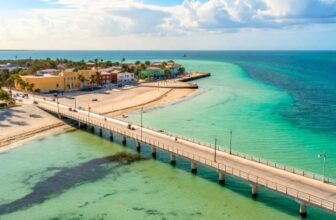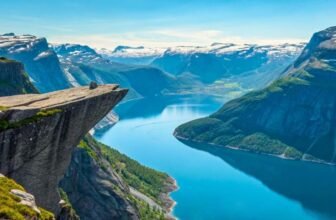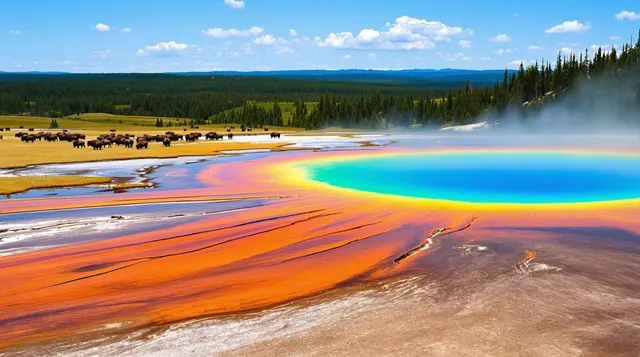
Standing in a place so untouched, so breathtaking, that it feels like nature is whispering its secrets just to you. The crisp mountain air, the rhythmic crash of ocean waves, the quiet hum of a rainforest alive with possibility—these are the moments that remind us why we must protect our planet.
Travel isn’t just about seeing the world; it’s about leaving it better than we found it. If you crave adventure that respects the earth, if you long for wild beauty without guilt, then these unforgettable destinations will steal your heart—without costing the planet.
1. Yellowstone National Park, Wyoming, Montana, Idaho

The grandfather of all national parks, Yellowstone is the ultimate destination for sustainable travelers. Established in 1872, this park covers nearly 3,500 square miles of untouched wilderness, making it one of the most breathtaking and well-preserved places in the world. It’s home to Old Faithful, colorful hot springs, dense forests, and abundant wildlife like bison, wolves, and bears. Every inch of Yellowstone reminds you why protecting nature is so important.
One of the most remarkable things about Yellowstone is its geothermal activity. It sits on top of a supervolcano, giving rise to over 500 geysers and thousands of thermal features, making it the most active geothermal area in the world. But with great beauty comes great responsibility—travelers are encouraged to stick to boardwalks, follow Leave No Trace principles, and avoid disturbing wildlife.
For sustainable travelers, Yellowstone is a dream. The park promotes eco-friendly lodging, offers shuttle services to reduce emissions, and has strict waste management policies to keep its landscapes pristine. The sheer silence of Lamar Valley at sunrise, the scent of pine forests after rain, and the sight of elk grazing near rivers—all make Yellowstone an unforgettable, soul-refreshing experience.
Best Travel Info:
- Best months to visit: May – October (spring and fall offer fewer crowds)
- Sustainable stays: Old Faithful Snow Lodge, Canyon Lodge & Cabins
- Must-do experiences: Hiking in Lamar Valley, Grand Prismatic Spring, wildlife watching at Hayden Valley
- Eco-friendly tip: Use the Yellowstone National Park shuttle system to reduce carbon footprint
2. Grand Teton National Park, Wyoming
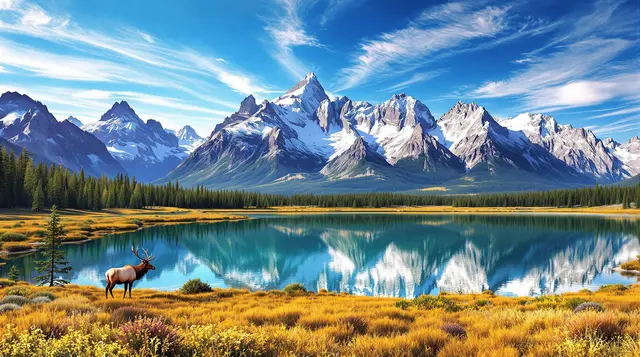
Imagine jagged mountain peaks reflecting in crystal-clear alpine lakes, moose wandering near the riverbanks, and the fresh mountain air—that’s Grand Teton. While it sits in Yellowstone’s shadow, many seasoned travelers prefer the Tetons for their rugged, wild beauty and fewer crowds. The park is a paradise for hikers, kayakers, and photographers who crave an authentic connection with nature.
One of the best things about Grand Teton is its commitment to conservation. The park actively preserves native wildlife, maintains its pristine waterways, and limits human impact by enforcing sustainable travel practices. Whether you’re trekking up to Hidden Falls, paddling across Jenny Lake, or watching elk roam through the meadows, the Tetons feel like a place where time slows down, and nature is in charge.
For a sustainable trip, consider camping or staying at eco-conscious lodges, using refillable water bottles (because single-use plastics are discouraged), and choosing guided wildlife tours that support conservation efforts. Whether you’re an adrenaline junkie or just seeking peace in nature, Grand Teton will leave you speechless.
Best Travel Info:
- Best months to visit: June – September for hiking, winter for skiing
- Sustainable stays: Jenny Lake Lodge, Teton Science Schools’ Eco-Lodges
- Must-do experiences: Kayaking on Jenny Lake, sunrise at Schwabacher Landing, hiking Cascade Canyon
- Eco-friendly tip: Opt for non-motorized activities like biking, hiking, and kayaking instead of driving
3. Olympic National Park, Washington
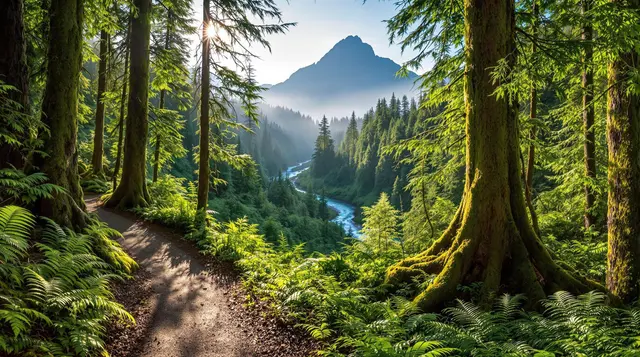
Have you ever wanted to experience rainforests, rugged coastlines, and glacial mountains all in one place? Welcome to Olympic National Park—a biodiverse wonderland in the Pacific Northwest. This park is a UNESCO World Heritage Site and an International Biosphere Reserve, proving just how valuable its ecosystems are.
The Hoh Rainforest feels like stepping into another world. Towering moss-covered trees, lush green canopies, and the sound of birds chirping in the mist create a dreamlike atmosphere. Then, just a short drive away, you’ll find Rialto Beach and its dramatic sea stacks, perfect for watching the waves crash against the shore. And if you’re up for an adventure, hiking up Hurricane Ridge offers sweeping views of snow-capped peaks.
What makes the Olympics perfect for sustainable travelers? The park’s commitment to conservation, zero-waste initiatives, and eco-friendly visitor centers make it a model for national parks worldwide. Staying on marked trails, avoiding single-use plastics, and respecting fragile ecosystems help keep the Olympics’s magic alive for future generations.
Best Travel Info:
- Best months to visit: May – September (for best weather)
- Sustainable stays: Kalaloch Lodge, eco-friendly cabins near Forks
- Must-do experiences: Hoh Rainforest hike, sunset at Ruby Beach, Hurricane Ridge viewpoint
- Eco-friendly tip: Use reusable containers for food and drinks—plastic waste is a huge issue in coastal areas
4. Acadia National Park, Maine
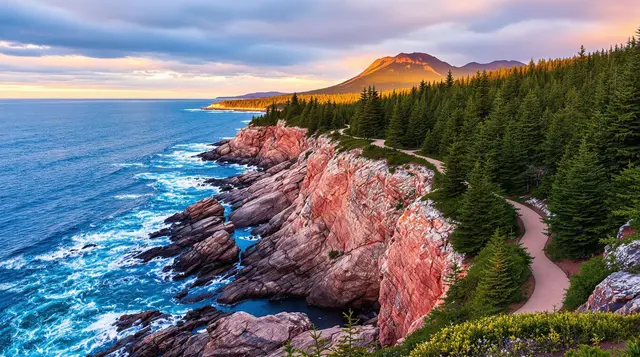
On the rugged coast of Maine, Acadia National Park offers a mix of rocky shorelines, dense forests, and stunning mountain views—all while being one of the most sustainably managed parks in the U.S.. It’s a place where you can wake up to the sound of crashing waves, hike through dense pine forests, and watch the sunrise from Cadillac Mountain (one of the first places in the U.S. to see the sunrise).
Acadia is deeply committed to low-impact travel. The park offers a free shuttle system to reduce car traffic, encourages visitors to pack out trash, and actively restores natural habitats. One of the most exciting initiatives? The park’s car-free days, allow hikers and bikers to explore the beauty of Acadia without vehicle noise or emissions.
From cycling the historic carriage roads to exploring tide pools along the rocky coast, Acadia has a little something for every nature lover. And if you’re lucky, you might even spot a peregrine falcon soaring over the cliffs or seals basking on the rocks.
Best Travel Info:
- Best months to visit: Late September – October (fall colors are spectacular)
- Sustainable stays: The Claremont Hotel, eco-friendly cottages near Bar Harbor
- Must-do experiences: Sunrise on Cadillac Mountain, Jordan Pond hike, biking the carriage roads
- Eco-friendly tip: Take the Island Explorer Shuttle instead of driving to reduce emissions
5. Great Smoky Mountains National Park, Tennessee & North Carolina
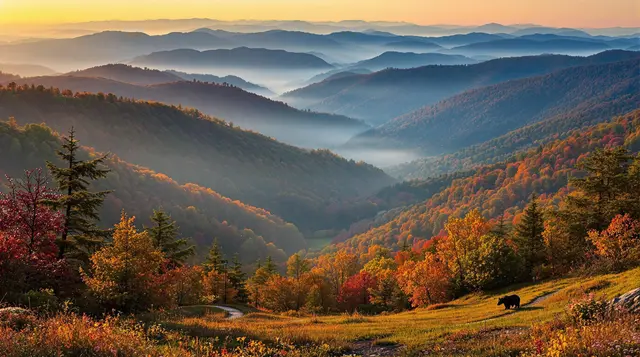
Dubbed “the wildflower capital of the world,” the Great Smoky Mountains are a haven for biodiversity. The park is famous for its misty mountain views, lush forests, cascading waterfalls, and vibrant wildlife. It’s also the most visited national park in the U.S., but don’t worry—there are plenty of secluded spots if you know where to look.
One of the best things about the Smokies is its free entry—one of the only major national parks without an entrance fee, making it an accessible eco-destination. The park is constantly working on wildlife protection programs, air quality initiatives, and trail conservation efforts to balance tourism with sustainability.
Whether you’re hiking to Clingmans Dome for sunrise, exploring the ghostly remnants of Cades Cove’s historic settlements, or spotting synchronous fireflies in the summer, the Smokies have an almost mystical quality that keeps people coming back.
Best Travel Info:
- Best months to visit: April – May (wildflowers) & September – November (fall foliage)
- Sustainable stays: LeConte Lodge, eco-friendly cabins in Townsend
- Must-do experiences: Hiking Alum Cave Trail, wildlife spotting in Cades Cove, Clingmans Dome at sunrise
- Eco-friendly tip: Stick to designated trails to prevent erosion and avoid feeding wildlife
6. Denali National Park, Alaska

If you crave untamed wilderness and jaw-dropping landscapes, Denali National Park is the place to be. Home to North America’s tallest peak, Denali (formerly Mount McKinley), this vast, rugged park is a true testament to nature’s raw beauty. Here, wildlife outnumbers humans, and grizzlies, moose, and caribou roam freely across the tundra.
Denali takes sustainability seriously—most of the park is roadless, with only one 92-mile-long road cutting through it. Visitors are encouraged to explore the park via eco-friendly shuttles, bicycles, or on foot, which drastically reduces carbon emissions. Plus, strict wildlife protection laws ensure that every visitor respects the park’s delicate ecosystem.
Denali’s silence is almost sacred. Standing at Wonder Lake with the mountain reflecting in the water, watching golden alpenglow on the peaks, or hiking through alpine meadows bursting with wildflowers—it’s a humbling reminder of why we must protect our wild spaces.
Best Travel Info:
- Best months to visit: June – September (snow-free hiking, wildlife sightings)
- Sustainable stays: Camp Denali, eco-friendly cabins in Healy
- Must-do experiences: Bus tour to Eielson Visitor Center, hiking Savage River Loop, flightseeing over Denali
- Eco-friendly tip: Take the Denali Park Transit Bus instead of private vehicles to reduce traffic and pollution
7. Redwood National and State Parks, California
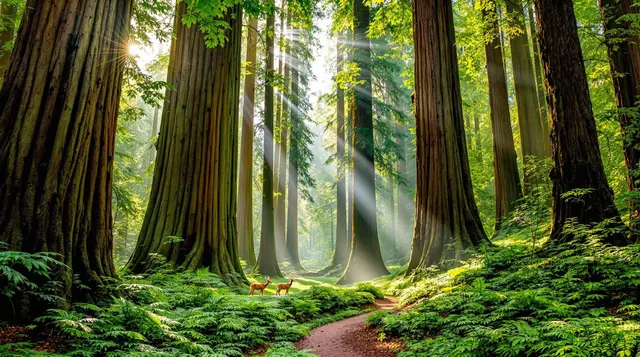
Ever wanted to stand beneath the tallest trees on Earth? The towering coastal redwoods of Northern California, some reaching over 350 feet tall and over 2,000 years old, make you feel like you’ve stepped into another world. Walking through the misty forest, you can’t help but marvel at these ancient giants and wonder what they’ve witnessed over the centuries.
Redwood National Park is more than just a tree sanctuary—it’s a conservation success story. Thanks to strict preservation efforts, these forests have been saved from logging, and today, the park remains a model for forest conservation and habitat restoration. Sustainable hiking trails, eco-friendly visitor centers, and a focus on low-impact tourism make it a prime destination for eco-conscious travelers.
Besides the trees, the park’s coastal beauty is equally mesmerizing. Whether you’re watching Roosevelt elk graze in the prairies, exploring Fern Canyon’s lush green walls, or walking along foggy coastal cliffs, every corner of this park feels like a hidden treasure.
Best Travel Info:
- Best months to visit: May – October (less rain, more hiking opportunities)
- Sustainable stays: Elk Meadow Cabins, eco-friendly lodges near Crescent City
- Must-do experiences: Walk among giants in Lady Bird Johnson Grove, drive the Avenue of the Giants, hike Fern Canyon
- Eco-friendly tip: Stick to designated trails—redwood root systems are fragile, and stepping off-trail can damage them
8. Glacier National Park, Montana
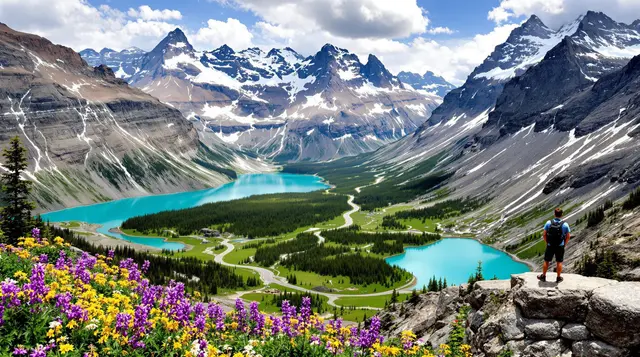
Glacier National Park is a climate change battleground—its legendary glaciers are melting fast, and scientists predict they could disappear by 2030. If there was ever a time to visit and appreciate this spectacular park, it’s now. With over 700 miles of hiking trails, turquoise glacial lakes, and jaw-dropping alpine scenery, Glacier is an outdoor paradise.
Sustainability is at the heart of Glacier’s management. The park limits private vehicle access, encouraging visitors to use electric-powered shuttle buses to minimize pollution. Plus, there’s a strong push for wildlife conservation, with strict rules to protect grizzly bears, mountain goats, and wolverines.
One of the park’s most famous experiences? Driving Going-to-the-Sun Road. It’s a 50-mile scenic highway that winds through the Rocky Mountains, offering some of the most spectacular views in the U.S.—just be sure to stop and take it all in.
Best Travel Info:
- Best months to visit: July – September (best weather, road fully open)
- Sustainable stays: Many Glacier Hotel, eco-lodges in Whitefish
- Must-do experiences: Hike to Hidden Lake Overlook, boat ride on Lake McDonald, drive Going-to-the-Sun Road
- Eco-friendly tip: Bring reusable food containers and refillable water bottles—single-use plastics are discouraged
9. Hawai’i Volcanoes National Park, Hawaii

Hawai’i Volcanoes National Park is alive—literally. Home to two active volcanoes, Kīlauea and Mauna Loa, this park is one of the most geologically active places on Earth. Watching lava slowly creep down the mountainside and reshape the land is an awe-inspiring reminder of nature’s raw power.
Hawai’i’s unique ecosystem is extremely fragile, and the park takes major steps to minimize human impact. Visitors are educated on the importance of staying on trails to avoid damaging delicate lava fields and respecting sacred cultural sites. Plus, the park has strict anti-pollution policies, and many local lodges embrace renewable energy and water conservation efforts.
Beyond volcanoes, the park offers lush rainforests, black sand beaches, and lava tubes to explore. Whether you’re hiking across solidified lava fields, stargazing on Mauna Loa, or feeling the heat from an active vent, the entire park is a testament to Earth’s ever-changing beauty.
Best Travel Info:
- Best months to visit: April – October (best weather, fewer crowds)
- Sustainable stays: Volcano House, eco-resorts on the Big Island
- Must-do experiences: Drive the Chain of Craters Road, hike Kīlauea Iki Trail, visit the Thurston Lava Tube
- Eco-friendly tip: Don’t take lava rocks or sand—Hawaiian legend says it brings bad luck, and removing them damages the ecosystem
10. Everglades National Park, Florida
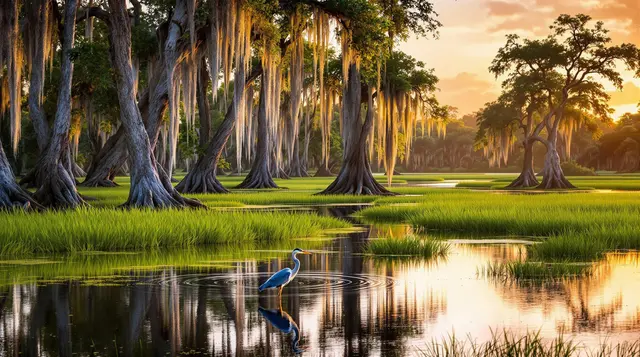
The Everglades aren’t just swamps—they’re a subtropical wonderland. Spanning 1.5 million acres, this park is home to alligators, manatees, panthers, and an incredible diversity of bird species. It’s also one of the most threatened ecosystems in the U.S., making sustainable travel here absolutely crucial.
The Everglades rely on healthy water flow, and conservationists work hard to restore natural waterways, protect endangered species, and reduce pollution. Visitors can support these efforts by choosing sustainable airboat tours that follow strict wildlife-friendly guidelines and avoiding single-use plastics that can end up in fragile wetlands.
There’s no better way to explore the Everglades than by kayak or canoe. Paddling through the Ten Thousand Islands, gliding across mangrove tunnels, and spotting wading birds in the sawgrass marshes is an unforgettable way to connect with this incredible ecosystem.
Best Travel Info:
- Best months to visit: November – April (dry season, fewer mosquitoes)
- Sustainable stays: Everglades eco-lodges, Glades Haven Cozy Cabins
- Must-do experiences: Kayaking through mangroves, airboat tour in Shark Valley, wildlife spotting at Anhinga Trail
- Eco-friendly tip: Choose an ethical airboat tour—some disturb wildlife, so look for operators that follow conservation guidelines
11. Rocky Mountain National Park, Colorado

If you’ve ever wanted to breathe in crisp alpine air, hike among towering peaks, and spot wildlife like elk and bighorn sheep, Rocky Mountain National Park is your dream destination. With over 350 miles of hiking trails, sparkling glacial lakes, and the breathtaking Trail Ridge Road—one of the highest paved roads in North America—this park is a showcase of raw, untouched wilderness.
What sets Rocky Mountain apart for sustainable travelers is its commitment to low-impact tourism. The park has a robust Leave No Trace initiative, strict backcountry camping regulations, and a free park shuttle to cut down on car emissions. Plus, there’s something deeply humbling about walking in the shadows of these ancient mountains, knowing that every footstep should be placed with care.
For the ultimate eco-friendly experience, consider backpacking and stargazing in the designated dark sky areas—there’s no better way to reconnect with nature than under a blanket of dazzling stars, away from city lights.
Best Travel Info:
- Best months to visit: June – September (for hiking), fall for wildlife spotting
- Sustainable stays: Wild Basin Lodge, eco-cabins in Estes Park
- Must-do experiences: Driving Trail Ridge Road, hiking Emerald Lake Trail, spotting elk in Moraine Park
- Eco-friendly tip: Travel with a refillable water bottle—Rocky Mountain has multiple refilling stations
12. Channel Islands National Park, California
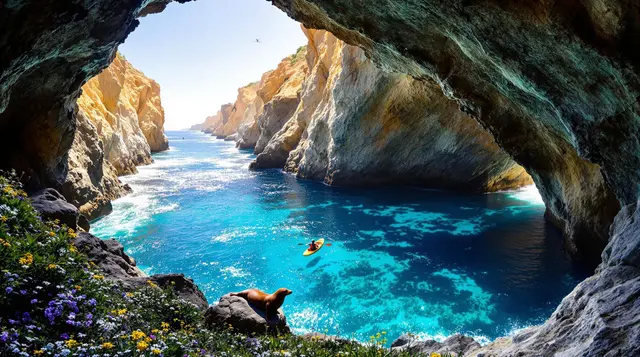
Far from the crowded tourist trails of California, Channel Islands National Park feels like a world of its own. Dubbed the “Galápagos of North America,” these five isolated islands off the coast of Ventura offer crystal-clear waters, dramatic sea cliffs, and an abundance of wildlife you won’t find anywhere else. The best part? There are no cars, no hotels, and no crowds—just you, nature, and the sound of waves crashing against the cliffs.
Sustainable travel here is second nature. The only way to access the islands is via a low-impact ferry service, and once you arrive, you’ll find yourself in a zero-waste, leave-no-trace environment. Whether you’re kayaking through sea caves, hiking to breathtaking viewpoints, or snorkeling with bright orange garibaldi fish, every adventure here is eco-friendly by design.
Channel Islands is also a hotspot for conservation research, with efforts to restore native plant species, protect endangered foxes, and preserve fragile marine ecosystems. Visiting this national park isn’t just about seeing nature—it’s about becoming part of a movement to protect it.
Best Travel Info:
- Best months to visit: Spring for wildflowers, summer for kayaking
- Sustainable stays: Backcountry camping on Santa Cruz or Anacapa Island
- Must-do experiences: Snorkeling in Scorpion Anchorage, sea cave kayaking, hiking Cavern Point Loop
- Eco-friendly tip: Pack out everything you bring in—there are no trash cans on the islands
13. Shenandoah National Park, Virginia
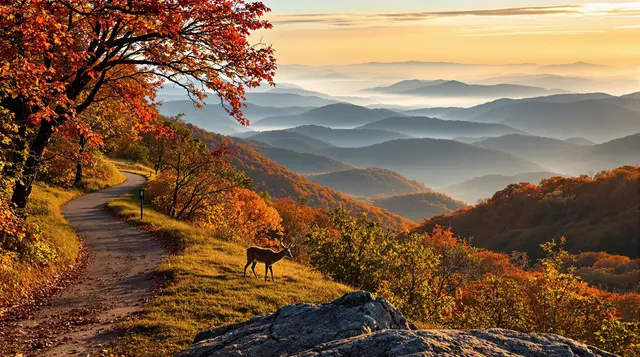
Just a short drive from Washington, D.C., Shenandoah National Park feels like stepping into a completely different world. With rolling Blue Ridge Mountains, cascading waterfalls, and over 200,000 acres of preserved wilderness, this park is a perfect retreat for those craving peace, solitude, and natural beauty.
Unlike some national parks that feel rugged and untamed, Shenandoah’s charm lies in its gentle, rolling landscapes. The famous Skyline Drive winds for 105 miles through the park, offering some of the most breathtaking mountain vistas on the East Coast. Sustainable travelers will appreciate the park’s efforts to combat air pollution, restore native forests, and reduce vehicle emissions through car-free travel initiatives.
For those seeking a slower pace, Shenandoah’s backcountry camping, birdwatching, and peaceful creekside hikes offer plenty of ways to unwind while keeping your footprint small. And if you visit in autumn? The explosion of reds, oranges, and gold in the foliage is pure magic.
Best Travel Info:
- Best months to visit: October for fall colors, spring for wildflowers
- Sustainable stays: The Lodge at Big Meadows, eco-friendly cabins in Luray
- Must-do experiences: Driving Skyline Drive, hiking Old Rag Trail, visiting Dark Hollow Falls
- Eco-friendly tip: Avoid visiting during peak hours—early mornings or weekdays reduce congestion
14. Apostle Islands National Lakeshore, Wisconsin
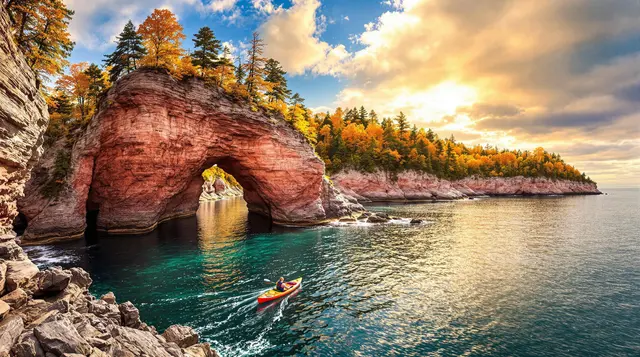
Who says the most stunning landscapes are only in the mountains or oceans? The Apostle Islands in Wisconsin offer a different kind of wild beauty—22 islands scattered across the blue waters of Lake Superior, home to towering sea caves, hidden beaches, and some of the best freshwater kayaking in the country.
Sustainability is key here. The islands are only accessible by kayak, boat, or ferry, keeping visitor impact to a minimum. During summer, kayakers glide through majestic red sandstone caves, while winter transforms the landscape into an ice cave wonderland, with frozen formations that look straight out of a fantasy novel.
The Apostle Islands are also a refuge for wildlife, including rare migratory birds, black bears, and delicate lichen-covered cliffs that thrive due to minimal human interference. Visitors are encouraged to practice strict Leave No Trace principles, ensuring that this pristine landscape remains untouched for future generations.
Best Travel Info:
- Best months to visit: Summer for kayaking, winter for ice caves
- Sustainable stays: Lakeside eco-lodges in Bayfield, camping on the islands
- Must-do experiences: Kayaking the sea caves, exploring Madeline Island, hiking on Stockton Island
- Eco-friendly tip: Use biodegradable sunscreen—chemical-based sunscreen can harm freshwater ecosystems
15. White Sands National Park, New Mexico

Ending the list with something truly unique, White Sands National Park is unlike any other place in the U.S.. Picture miles and miles of pure white gypsum dunes, shifting under the wind, creating an almost otherworldly landscape that looks straight out of a dream.
What makes this park special isn’t just its beauty—it’s one of the most delicate ecosystems in the world. The white gypsum dunes are constantly shifting, making preservation efforts crucial. The park promotes low-impact hiking (stick to the designated trails!), minimal water waste, and eco-friendly visitor education programs to help protect this fragile desert environment.
Sunsets at White Sands are breathtaking, with the dunes reflecting soft hues of pink and orange. And if you visit during a full moon? The whole park glows under silver light, offering one of the most magical night experiences imaginable.
Best Travel Info:
- Best months to visit: Fall and spring (avoid summer heat)
- Sustainable stays: Nearby eco-lodges in Alamogordo
- Must-do experiences: Sunset dune hikes, full moon walks, sledding down the dunes
- Eco-friendly tip: Pack extra water—this desert climate is deceivingly dry




